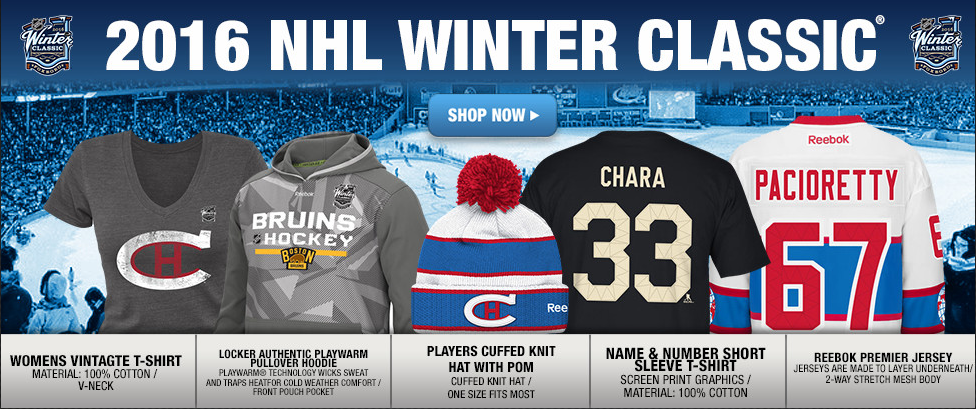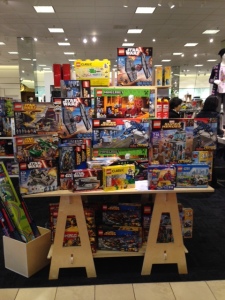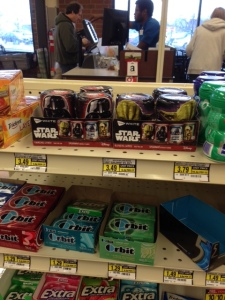Ira’s Fearless Forecast: Sports Licensing 2015-2016
NEW YORK, NY; DECEMBER 15, 2015—Sports licensing rarely has a runaway hit that moves the needle up for the entire segment the way Star Wars is doing for entertainment licensing this year (see Fearless Forecast: Entertainment Licensing).
Historically, sports are more likely to face a negative impact from a strike, lockout or other labor dispute, or a public relations crisis (abusing girlfriends/wives, health issues such as concussions) than to experience a sudden surge.
 Sports licensing is also spread across leagues, teams, and players most of whom have more or less local followings. So an uptick from, say, a team that hasn’t won a major title in some years or a player who achieves a record in his or her sport isn’t going to have as big an impact on the segment, nationally, as a whole.
Sports licensing is also spread across leagues, teams, and players most of whom have more or less local followings. So an uptick from, say, a team that hasn’t won a major title in some years or a player who achieves a record in his or her sport isn’t going to have as big an impact on the segment, nationally, as a whole.
All of which adds up to why sports licensing has essentially plateaued. For most leagues, teams and athletes, upsides are incremental and opportunistic. In the most extreme cases (a no-hitter, running record yardage in a single game, and so forth), the opportunism turns into a game of beating the pirates — lower case “p” intentional — who invariably seem able to be on the street with t-shirts before the game is over; this compares to licensees who will take days if not weeks to celebrate a sudden occasion.
Most of the upside activity in sports coalesces around a handful of trends we’ve seen over the past several years:
- Personalization. Put your name on your favorite player’s team number and colors. Embroidery, heat transfers, and various types of instant printing are available in-store while you wait (not long) and online.
- The Players Associations are becoming more aggressive. Many of their efforts center on marketing tie-ins that may or may not have licensing components. But even NFL and MLB Players Associations’ presence as exhibitors at Licensing Expo in Las Vegas this past June spoke to the higher profile they are seeking.
- Co-branding players using both their pro team and college insignias; PGA co-branded college, NFL, MLB , NBA and NHL golf gear; cartoon characters and leagues, and so on.

- International. American sports aren’t as developed internationally as are entertainment properties, but the NBA has been notable for its efforts at exposing kids in other countries to basketball. And the NBA, MLB and NHL all have some games being played in other countries as part of their efforts to increase overseas audiences and, ultimately, merchandise sales. Hockey merchandise sales continue to grow. Soccer is growing, albeit from a very small base; professional soccer has made slow but steady inroads in the U.S. but is invariably looked to as “the next big” whatever. (Some of us remember when global superstar player Pele was going to turn soccer into a mainstream American sport.)
- Women. Alyssa Milano can’t be given enough credit for changing the attitude of the major leagues about what women will buy. It’s not about an oversized jersey women can wear as a nightshirt. And it’s not about pink. It’s about apparel designed and fitted for women, with a fashion-forward look that also appeals to the fan interest. Growth in the segment is slowing, but it still has substantial momentum. When it plateaus, it will be at a high level.
- Growth in the stature of additional sports ranging from hockey and soccer to tennis and golf to lacrosse and jai-alai. (I recently heard of several schools offering bocce; I don’t see a big licensing opportunity there. Yet.)
Kids are the mystery ingredient for sports merchandising’s next growth spurt. For kids who play sports, the family budget is allotted to little league uniforms and gear. And its difficult to differentiate kid-oriented licensed sports merchandise in the way that women’s merchandise has achieved.
Ira’s Fearless Forecast: Barring any major catastrophes, labor stoppages, health issues or morals-based PR challenges, and thanks mostly to price increases, retail sales of licensed merchandise based on sports properties will continue modest growth of 2%-3% annually for 2015 and 2016.
Ira Mayer, former publisher and executive editor of The Licensing Letter, conducts competitive research and consults for companies in the licensing business; you can contact him by clicking on the “Contact” button above left.
Ira’s Fearless Forecast: Entertainment Licensing 2016-2017
NEW YORK, NY; DECEMBER 9, 2015—Over the next few days I’ll post some prognostications on various sectors of the licensing business. While I (and everyone else on the planet) have written plenty about Star Wars in recent months, that is unquestionably the story of the moment. So let’s start with a look at the impact Star Wars is having on entertainment licensing and where the market is headed.
Looking at 2015, Star Wars has been the best news in entertainment licensing and, assuming the movie performs as expected, will likely be the entertainment segment’s blockbuster for 2016 as well.
But Star Wars has also been the worst news in licensing for 2015, sucking the juice out of every other pop culture property this year, likely keeping even hot newcomers such as Nickelodeon’s Paw Patrol from realizing their full potential, and holding back other retro properties that have had difficulty gaining placement at retail, such as Iconix’s Peanuts. Minions has held strong. But Superheroes? Maybe their powers aren’t infinite, at least in the licensing universe (and maybe those powers were diminishing even before the Star Wars onslaught).
From Hudson newsstands at airports to Nordstrom’s children’s department to Walgreens, Star Wars is ubiquitous and has been since back-to-school.
I wasn’t monitoring the licensing business in 1977, but this is the movie credited with initiating the modern licensing business. Given the institutionalization of licensing today, and the Disney machine behind Star Wars now, we’re no doubt looking at a licensing blockbuster of a whole different order of magnitude.
Today, for manufacturers and retailers waiting to release merchandise with the new movie’s art — remember, so far, with a few notable exceptions such as the BB-8 Droid, it’s been all classic images — it’s a matter of waiting for the force to awaken and do its part.
What will the net effect be on entertainment licensing for 2015-2017? Star Wars does not appear to be carrying the rest of the business up with it. Rather, it is displacing just about everything else. Still, in the aggregate it is more than compensating for others’ lost growth or stagnation, which is why entertainment licensing overall will show substantial growth for 2015 and probably 2016.
Licensing today is generally a matter of who are you going to knock off the shelf in order to get on. Star Wars is different, though: In addition to usurping others’ shelf space, Stars Wars found new distribution (such as at Nordstrom and Hudson) that hadn’t been given over to entertainment toys, apparel and collectibles to this degree before. That is enlarging the segment as a whole.
If the movie does indeed perform as expected, Star Wars will also be the worst news in licensing for everyone else in 2016 and, for Disney, an even worse story for 2017. Why?
Once Star Wars merchandising runs its course — and it will run its course — Disney will have to replace the Star Wars licensing juggernaut with something else. Even though there’s another movie scheduled for 2017, the second release in a series never generates the same in merchandise sales (and rarely at the box office) as the first. If superheroes are still in style — and that’s a big “if” — Disney will have Marvel to fall back on. Or perhaps they’ll have another Frozen. But it’s hard to bet on those scenarios.
The good news is that once Star Wars does run its course, that should re-open the shelves to other entertainment properties, and there’s no dearth of those in the wings.
Ira’s Fearless Forecast: Retail sales of licensed merchandise based on entertainment properties in the U.S. and Canada will be up 7%-9% for 2015.
Ira Mayer, former publisher and executive editor of The Licensing Letter, conducts competitive research and consults for companies in the licensing business; you can contact him by clicking on the “Contact” button at left.


